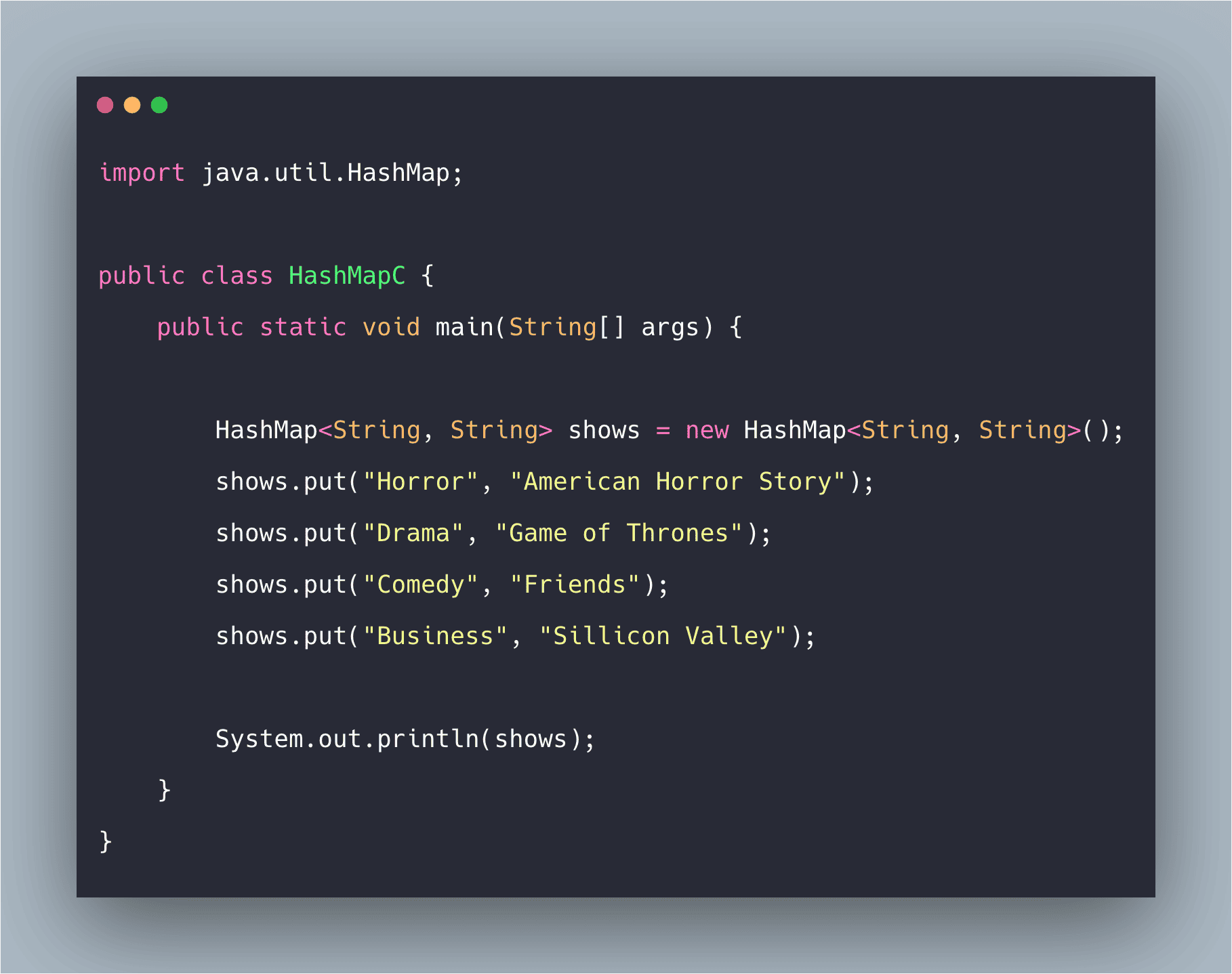

The HashMap class implements the Map interface. Here, keys are unique identifiers used to associate each value on a map. Provides a collection-view of the values in the map.Ĭ:\Program Files\Java\jdk1.6.The HashMap class of the Java collections framework provides the functionality of the hash table data structure. Returns a collection containing the values in the map. Returns the number of key/value pairs in the map. Puts all the entries from m into this map. Otherwise, the previous value linked to the key is returned. Returns null if the key did not already exist. Puts an entry in the invoking map, overwriting any previous valueĪssociated with the key. This method provides a set-view of the keys in the invoking map. Returns a Set that contains the keys in the invoking map. Returns true if the invoking map is empty.
#JAVA HASHMAP CODE#
Returns the hash code for the invoking map. Returns the value associated with the key k. Returns true if obj is a Map and contains the same entries.

Method provides a set-view of the invoking map. The set contains objects of type Map.Entry. Returns a Set that contains the entries in the map. Returns true if the map contains v as a value. Returns true if the invoking map contains k as a key. Removes all key/value pairs from the invoking map. But this is not possible in the case of HashMap. Substitute the underlying implementation without any code compatibility
The advantage of using Map is that you can. The difference between the above two declaration is the interface they. An UnsupportedOperationException is thrown when an attempt is made to. Object and null is not allowed in the map. A NullPointerException is thrown if an attempt is made to use a null. A ClassCastException is thrown when an object is incompatible with the. When no element exists in the invoking Map, many methods throw a 'NoSuchElementException'. Using a key and a value, you can store the value in Map object. Unique keys which you use to retrieve value at a later date. The Map interface maps unique keys to value means it associate value to Java HashMap - Java Tutorials Java HashMap - Java Tutorials Java final method Assert in Java Final method in java Autoboxing in Java assert In Java JDBC batch insert using Java bean class Java Singleton Pattern Java Collection API - Java Tutorials Stack Overflow - Java Tutorials End of Year Puzzle The link to the outer class,java tutorial,java tutorials Orientating Components Right to Left,java newsletter,java,tutorial Non-virtual Methods in Java - java tutorials Multicasting in Java - java tutorials,tutorial Creation Time Comparison of Multi Dimensional Array- Java Tutorials Making Exceptions Unchecked - java tutorial,java tutorials Making Enumerations Iterable - JDK 5 Example Which is Faster - LinkedList or ArrayList? LinkedHashMap - Java Tutorials HashMap and HashCode JDK 1.4 the NullPointerException - Java Tutorials Java HashMap - Java Tutorials Java GC java awt package tutorial Java Multi Dimensions Array - Java Tutorials Java HashSet - Java Tutorials Java Field Initialisation - Java Tutorials Java Comments - Java Tutorials J2EE Singleton Pattern - Design Pattern Tutorials Java - JDK Tutorials garbage collection in java Final Methods - Java Tutorials Exceptional Constructors - Java Tutorials Double-checked locking,java tutorials,java tutorial Disassembling Java Classes - Java Tutorials Java Deadlocks - Java Deadlocks Tutorials, Deadlocks in Java Commenting out your code - Java Tutorials Class names don't identify a class - Java Tutorials Causing Deadlocks in Swing Code Exception in Java - Java Tutorials






 0 kommentar(er)
0 kommentar(er)
